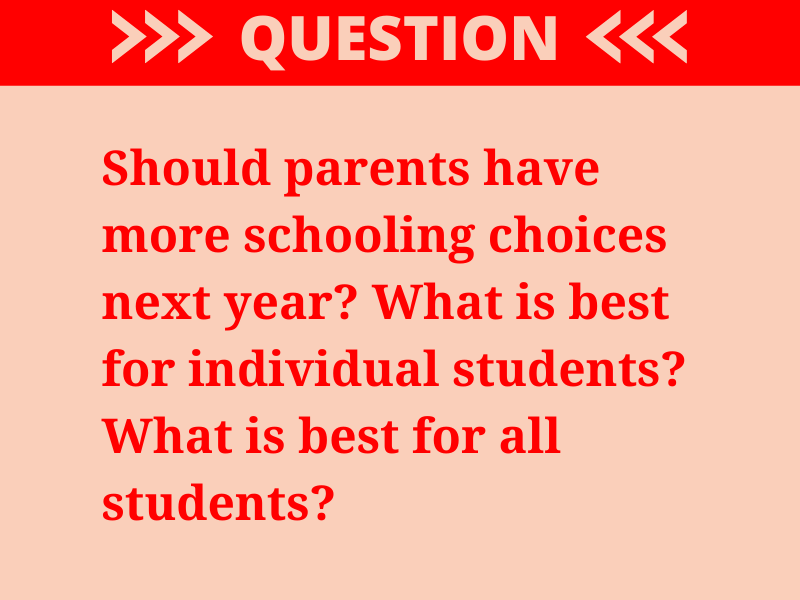Reality Check: What Will It Take to Reopen Schools Amid the Pandemic? 5 Experts Weigh In on School Choice Options for Families

This is the fourth in a series of invited responses to some of the big, unanswered questions facing America’s schools as they prepare to reopen in the fall. The Center on Reinventing Public Education, in partnership with The 74, fielded responses from a diverse roster of educators and policymakers in order to promote creative thinking and debate about how we can collectively meet student needs in an extraordinarily challenging school year, and beyond. You can see previous installments here.
We need innovation, we need it now, and we need parents in charge
By Lakisha Young
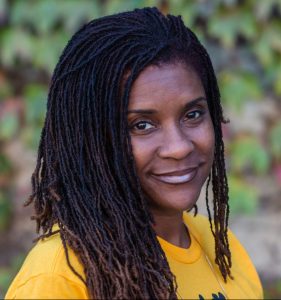 Many families do not have a culture of distance learning in their homes. Most of the families the Oakland REACH supports do not have access to computers or reliable internet. But even in homes equipped with these tools, many of our parents were themselves failed by the public education system and don’t have the skills to help their children with schoolwork.
Many families do not have a culture of distance learning in their homes. Most of the families the Oakland REACH supports do not have access to computers or reliable internet. But even in homes equipped with these tools, many of our parents were themselves failed by the public education system and don’t have the skills to help their children with schoolwork.
That means we can’t simply give parents a choice between distance learning and sending their kids to school, because that isn’t a real choice for most families.
It’s not a win to tell the poorest parents their children go back to school first. We can’t require kids without resources at home to report to school in the fall just because they don’t have a computer. And let’s recognize that, when less than 30 percent of our Black and Brown students are reading on grade level, virtual learning might not be the tragedy some folks imagine. Are we going to risk their health to send them back for more failure?
Distance learning is now part of the long-term education reality — whether for some or all of our students, and for some or all the school year. So let’s not just lament how hard that is. Let’s not talk about how sad it is that some kids face a digital divide. Let’s not waste time and have our kids lose months of learning. Let’s acknowledge this reality and plan for it.
That’s exactly what the Oakland REACH is doing. We see an opportunity to create a solution that gives parents the tools to be leaders in their children’s education, while working together to close the gap on critical learning they’ve lost. That solution for us is our new City-Wide Virtual Hub, which will offer literacy and math instruction for our students and make our parents savvy in virtual practices.
As far as we know, this is a first-of-its-kind citywide resource. It’s not just about referrals, survival strategies and replacement instruction. It’s about making parents partners in the process and raising the bar on instruction. We were able to launch our first round of five-week programming by June 29, with more than 200 students.
We need a lot more big, out-of-the box innovation like this — with our parents at the head of the table. And we need it fast.
Lakisha Young is co-founder and executive director of The Oakland REACH, a parent-led group committed to empowering families from the most underserved communities to demand high-quality schools for our children.
All families need options; right now, only some have them
By Derrell Bradford
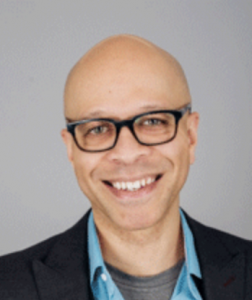 To me, the answer to this is always yes, but what I think we will see is tension arise between wealthy parents — who bought their publicly funded private school with an expensive mortgage — and school districts either unwilling to reopen fully or unable to give any compelling instructional alternative that isn’t deeply watered down with less time and less actual learning.
To me, the answer to this is always yes, but what I think we will see is tension arise between wealthy parents — who bought their publicly funded private school with an expensive mortgage — and school districts either unwilling to reopen fully or unable to give any compelling instructional alternative that isn’t deeply watered down with less time and less actual learning.
Poor folks don’t get what they pay for all the time. It will be interesting to see what happens when the reverse is the case.
Derrell Bradford is executive vice president of 50CAN.
The portfolio strategy post-COVID
By Paul Hill
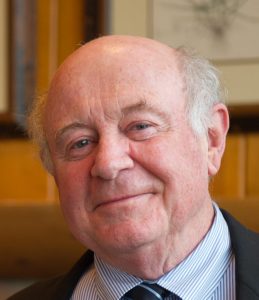 Americans have never bought into the idea that all kids are alike. Parents with more than one child regularly say that a school that is just right for one kid is a tough stretch for another. Though many settle for the same school for all their children, most see big differences in what motivates kids and would like the opportunity to find the best possible fit for each one.
Americans have never bought into the idea that all kids are alike. Parents with more than one child regularly say that a school that is just right for one kid is a tough stretch for another. Though many settle for the same school for all their children, most see big differences in what motivates kids and would like the opportunity to find the best possible fit for each one.
Yet American school districts often claim to provide a set of identical schools serving different neighborhoods. They never could, and they don’t now.
As they consider reopening for the coming COVID-19 autumn, school districts face questions that can be answered only by school differentiation and family choice:
- If students can’t all be in school full time, how to make a seamless link between what students learn in school and at home?
- What to do for parents who refuse to send their children to school, and for teachers who need to avoid face-to-face contact to preserve their health?
- How to deal with the wildly different levels of learning loss that different children will have suffered?
- How to deal with emotional needs while not slowing down learning and not wasting the time of those who don’t need it?
Even in districts like Cleveland, which has broken the link between students’ age and grade levels in favor of mastery-based instruction, the proportion of students needing to work below their age-normal grade will vary from school to school, as will parents’ and teachers’ willingness to accept face-to-face instruction and children’s ability to benefit from distance learning.
The core idea behind the portfolio strategy is totally relevant now: meaningful choices for parents provided by diverse schools, all overseen by a district that supports school distinctiveness and good matches for kids. The strategy supports school diversity by calling for schools to get real-dollar funding based on enrollment, and to be able to use funds flexibly.
In the COVID period, family choice and schools’ ability to solve problems will be necessary but more complicated than ever before. Families that enroll confidently in a school in fall 2020 might find that they need something else or that the school, in trying to serve the majority of its students, evolves away from them.
Portfolio, as a flexible problem-solving strategy, is necessary today, even more than when the first localities (New York, New Orleans, Denver) first adopted it.
Paul Hill is the founder of the Center on Reinventing Public Education and a research professor at the University of Washington Bothell.
Now more than ever, school choice can’t be the end goal
By John Legg
 As a lifelong school choice advocate, I believe the answer to whether parents should have more schooling choices next year is simple — a resounding no.
As a lifelong school choice advocate, I believe the answer to whether parents should have more schooling choices next year is simple — a resounding no.
School choice is the process; education quality is the goal. Too often, we celebrate school choice but fail to ask if it customizes learning with rigorous content. School choice must give students access to engaging, collaborative learning environments with deep, meaningful relationships among learners and educators.
The question is not whether families should have more school choice next year, but whether they should have high-quality educational options that are equipped to meet their unique needs.
Not all educational options are equal — parents must have options, and indeed and in many areas, these options do not exist or exist in name only. All schools, including schools of choice, must be transparent to empower parents to make informed decisions. One thing has become abundantly apparent during the pandemic: Not all educational options are equal.
Some education systems simply gave up, while others, including many schools of choice, attempted to support remote learning but lacked an understanding of basic educational pedagogy. While well-intended, many remote learning systems simply consisted of e-worksheets and reading assignments.
Moreover, they were limited to almost no teacher-to-learner engagement and zero student-to-student engagement. This is not remote learning; it is basically just homework. In rare cases, some school districts delivered daily robust lessons and live interaction with teachers and maintained dedicated time for student-to-student collaborative projects. Quality schools must have periodic assessments to measure student progress and teacher effectiveness, as well as dedicated digital space for students to engage in social activities.
Having more programs labeled as school choice is not the answer if these new options are not coupled with rigor, collaboration, accountability and strong relationships.
School choice is merely a vehicle to get us to our final destination of a high-quality, rigorous educational system that embodies strong school cultures and provides learners with meaningful relationships and a sense of belonging.
John Legg is co-founder and business administrator of Dayspring Academy, a pre-K-12 charter school near Tampa. He also served 12 years in the Florida Legislature, including four years as chairman of the Senate Education Committee.
The pandemic has proved that parents need options
By Howard Fuller
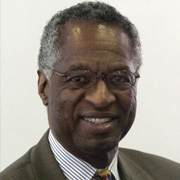 If ever evidence was needed that the “one best system” does not work for all students, the pandemic has provided it. Some traditional districts were able to respond effectively and provide education to their students; others were not.
If ever evidence was needed that the “one best system” does not work for all students, the pandemic has provided it. Some traditional districts were able to respond effectively and provide education to their students; others were not.
In many places, charter schools were able to be nimble and creative to ensure that their students got the best education possible under the circumstances.
The “one best system” must give way to new structures that are driven by parent choice — structures that are able to provide students with an education using 21st century tools and organizational forms.
Howard Fuller is founder and board chair emeritus of Howard Fuller Collegiate Academy, a charter school in Milwaukee, and recently retired as director of the Marquette University Institute for the Transformation of Learning.
Get stories like these delivered straight to your inbox. Sign up for The 74 Newsletter

;)
